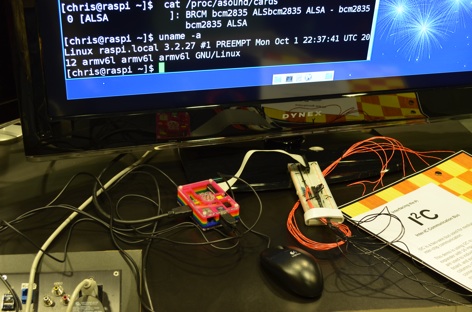One of my New Year’s resolutions is to learn some computer programming. With The Engineer going online only and digital publishing likely to be the standard from now on, it seemed prudent for my career to add at least a basic knowledge of HTML to my skills. For the last week I’ve been using Code Academy, a free online service that offers interactive tutorials in a variety of programming languages. It’s going well so far, although I don’t think I’ll be called on to redesign The Engineer’s website any time soon.
Understanding and being able to use programming languages is becoming an increasingly important skill for a growing number of roles, not just journalists. Computers are an inescapable part of modern life and relying on IT specialists to turn up can waste valuable time. And with armies of programmers in Asian countries offering cheap labour, it’s vital for developed economies like Britain that they maintain a workforce educated in a whole range of areas including computer science.
Tools like Code Academy offer many people what wasn’t available when they were in full-time education. I flirted with the idea of learning to code when I was at school but didn’t know where to begin. It seemed to me an unwieldy, inaccessible skill, something only for hardcore nerds who shunned daylight and human friendship for hours staring at incomprehensible lines of digits. Of course, this was wrong, but how many others like me will have been put off programming because it appeared to be so alien to them?
This is why there has been so much fuss over the Raspberry Pi, a pocket-sized computer costing just $25 (£16) developed by a UK charitable foundation with the aim of enabling and encouraging kids to learn to program. Early enthusiasts compared it to the BBC Micro, which they said had inspired a generation to learn to code in the 1980s. My slightly older colleagues remember this machine fondly too, although none of them have become expert programmers. It seems my peers and I were unlucky to be children of the 1990s and not have our own equivalent. I think the best we had was the Roamer robot and that spent most of its time in a cupboard.
It’s been fantastic to see the Raspberry Pi prove so popular, having already sold over 700,000 units since it went on sale almost a year ago, far outstripping expectations. Initial scepticism was raised when it appeared most early purchasers were older enthusiasts and hobbyists, but the foundation now says more parents, teachers and students are buying the computers and they are now found in hundreds of UK schools.

The government has readily bought into the idea that computer science deserves a more prominent place in education, pressed by industry heavyweights such as Google boss Eric Schmidt, who said the UK was throwing away its computing heritage. (Personally, I think Google would do well to remember that education is paid for by taxes, but that’s another matter.) The previous ICT curriculum that focused heavily on using software such as word processors and spreadsheets has been scrapped and the Royal Academy of Engineering has helped draft a new one designed to incorporate digital literacy and an understanding of programming from an early age.
There are dangers among all these positive steps, however. Yes, young people should be given the opportunity to learn programming. But they shouldn’t be allowed to think that that’s all there is to technology. Far too many journalists, politicians and even businesspeople are guilty of worshipping the cult of the internet entrepreneur, convinced that Britain would secure its economic future if only every child could build an app and start a digital firm.
You only have to look at how many “technology” websites out there report on Apple, Microsoft and Facebook but not Rolls Royce, Astrium and Jaguar Land Rover to see this at work. (Of course, The Engineer is biased on this.) And it was this kind of narrow thinking that helped push manufacturing and physical technology so far down the priority list in UK politics under the last two governments (with financial services instead of digital technology as the economy’s saviour).
The other risk is in thinking we can simply buy every child a Raspberry Pi and in 10 years we’ll have a legion of programmers similar to China’s. It’s easy to think of children as being very tech-savvy, but changes in the ICT curriculum have come from the realisation that knowing how to use computers isn’t the same as understanding how they work. Owning a programmable computer like the Raspberry Pi isn’t enough to make any kid a programmer. The right guidance, supporting materials and inspiring projects are needed to ensure children find computer science accessible and interesting.
When I was looking for an easy way to learn coding, I considered the Raspberry Pi. While I marvelled at its engineering achievement, it didn’t seem to offer much in the way of instructional material. Its quick start guide was full of jargon and seemed to end at the point where you had plugged in all the additional peripherals you would need to buy. The blogs I found discussing how to get use it featured screen grabs of those scary-looking lines of digits. Maybe I was wrong but it didn’t appear to be the accessible answer I was looking for.
As Dr Dave Cohen, professor of computer science at Royal Holloway, pointed out to me, many young people already have powerful, programmable computers in their pockets in the form of smartphones (perhaps not including iPhones). I’m not sure how the Raspberry Pi offers a better alternative. What we need is something to reach the kids who don’t play around with code at home already and are used to intuitive graphical interfaces not text prompts.

Something that appears to fit this bill is Lego Mindstorms, the Danish company’s educational robotics line. Although I don’t wish to sound like an advert for this product, from what I’ve seen it offers all the things I’ve just mentioned and gives kids a chance to understand, design and engineer physical technology as well as programming. Cohen even uses it to teach his undergraduate students.
Chris Carver, head of technology at Kingsbury High School in London, summed it up neatly at the recent launch of the latest Mindstorms range when he said: ‘Not everybody is going to be a code writer, a programmer; some of them are going to be engineers … You’ve got students working learning to design the whole product, not just write the code. We’re giving them the opportunity to have a go. It might not mean that they’re going to follow that as a career pathway but it means at least they’ve had a taste, and that’s what education is really about.’
Mindstorms also offers plenty of support and ideas for teachers, which is possibly the most important aspect of all. It largely doesn’t matter what bit of kit we give young people to play with if their teachers don’t understand the importance of it or can’t help their students to use it. This is probably why our Roamer sat gathering dust. If we want to inspire the next generation of engineers - physical or digital - we need to inspire their teachers first.




JLR teams with Allye Energy on portable battery storage
This illustrates the lengths required to operate electric vehicles in some circumstances. It is just as well few electric Range Rovers will go off...